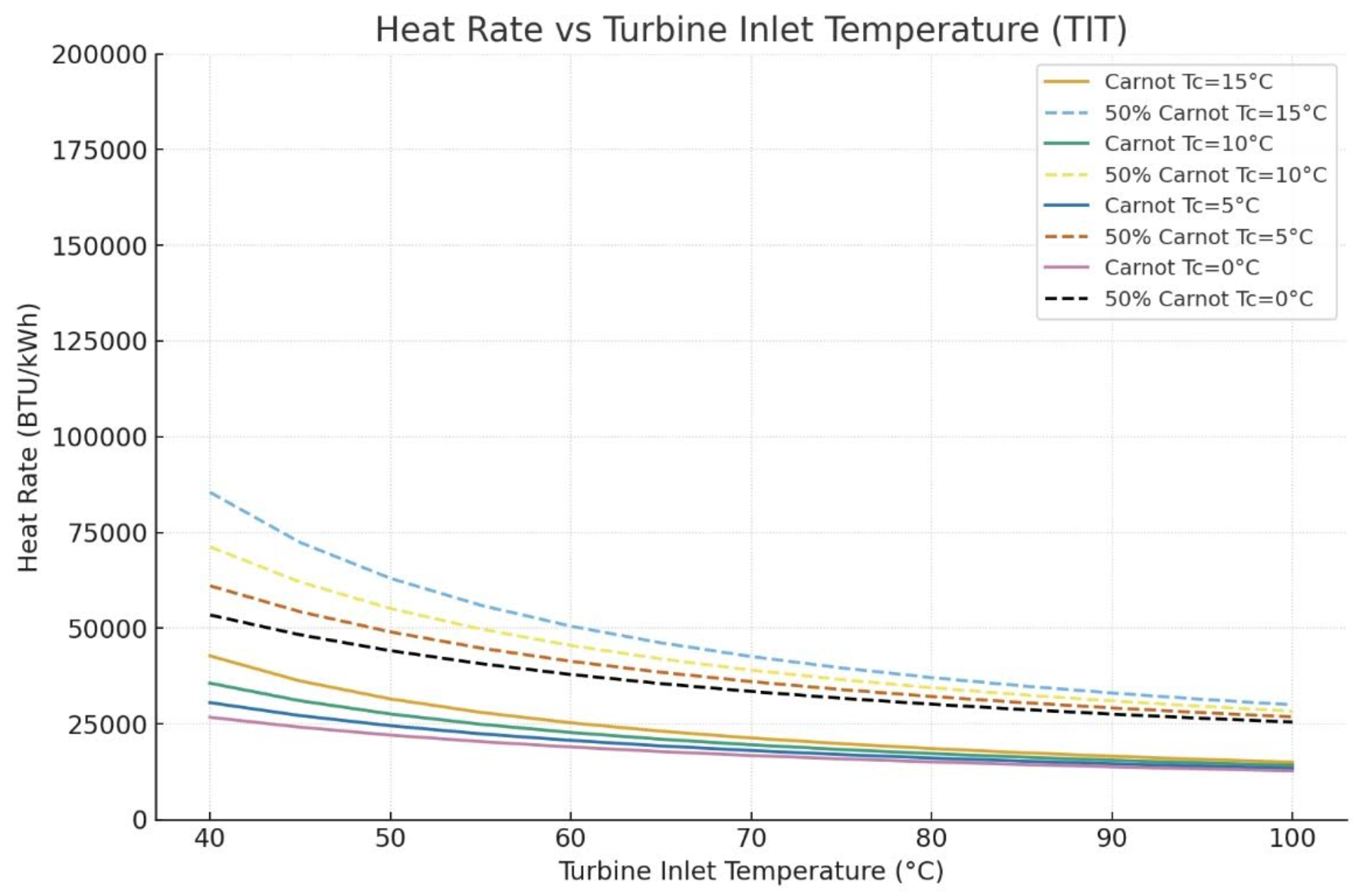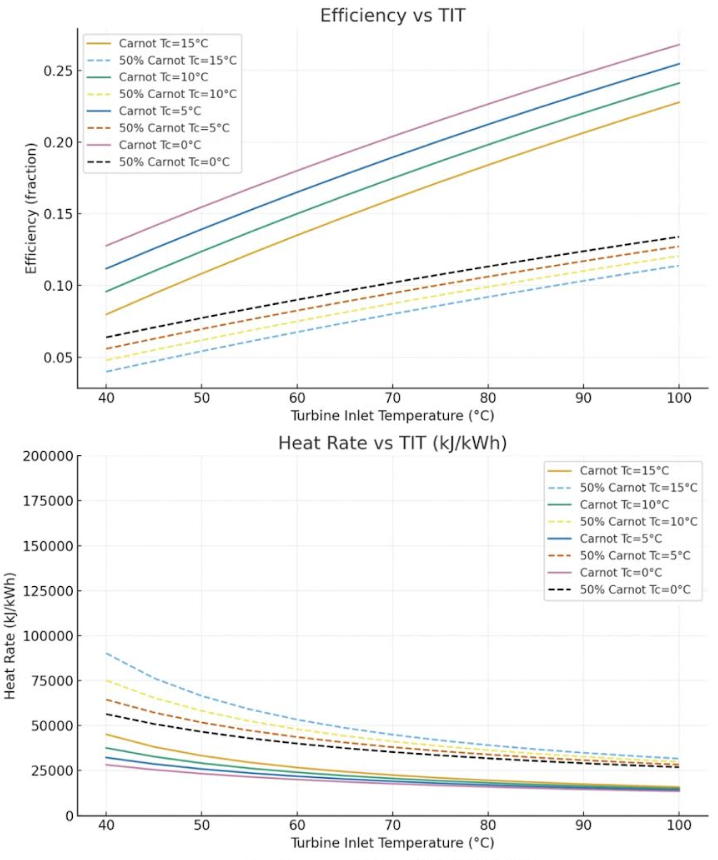

Infinity Turbine Sales | Plans | Consulting TEL: 1-608-238-6001 Email: greg@infinityturbine.com
For Data Centers Gas Turbine Waste Heat to Power Owners of Cat Solar Gas Turbine Generators and the new Boom Aero Derivative Gas Turbines Generators: Take your waste heat and make additional Combined Cycle power or generate cooling for your data center... More Info
IT250 Supercritical CO2 Gas Turbine Generator Silent Prime Power $999,000 250 kW (natural gas, solar thermal, thermal battery heat) ... More Info
IT1000 Supercritical CO2 Gas Turbine Generator Silent Prime Power $3M 1 MW (natural gas, solar thermal, thermal battery heat) ... More Info
IT50MW Supercritical CO2 Gas Turbine Generator Silent Prime Power $50M (natural gas, solar thermal, thermal battery heat) ... More Info
Data Center Consulting Prime power and energy consulting for AI and data centers... More Info
Quantum Super Turbine... Developing in 2026: High efficiency topping cycle turbine generator with bottoming cycle cooling, specifically designed for Data Centers with back-end combined cycle modules for cooling, hydraulic, or heat pump capabilities... More Info
|
Refrigerants for Organic Rankine Cycle Systems: Properties, Efficiency, and Usage Notes IntroductionOrganic Rankine Cycle (ORC) systems use refrigerants and other working fluids to convert low and medium grade heat into electricity. The choice of refrigerant impacts efficiency, safety, regulatory compliance, and equipment design. This article reviews common ORC refrigerants, their thermodynamic limits, Carnot efficiencies at those limits, and key use notes including environmental restrictions and optimal condenser conditions.R-245fa (Honeywell Genetron)Maximum Temperature: ~150 °C (302 °F)Pressure at Max Temp: ~36 bar (~522 psi)Carnot Efficiency at Max Temp (vs 30 °C / 86 °F condenser): ~29 percentCondenser Temperature: Best performance near 30–35 °C (86–95 °F)Usage Notes: Widely used in commercial ORC systems. Classified as an HFC with a high global warming potential (GWP ~950). Scheduled for phase down under the EU F-Gas Regulation with sunset dates already in place for new equipment in some applications.R-1233zd(E) (Hydrofluoro-olefin, HFO)Maximum Temperature: ~180 °C (356 °F)Pressure at Max Temp: ~19 bar (~276 psi)Carnot Efficiency at Max Temp (vs 30 °C / 86 °F condenser): ~33 percentCondenser Temperature: Performs well with 25–35 °C (77–95 °F) condenserUsage Notes: Low GWP (~1) HFO refrigerant marketed as a replacement for R-245fa. Accepted under EU and US regulations with no near-term sunset date. Increasingly popular for high-temperature ORC and centrifugal chiller systems.R-123 (HCFC, historical use)Maximum Temperature: ~130 °C (266 °F)Pressure at Max Temp: ~14 bar (~203 psi)Carnot Efficiency at Max Temp (vs 30 °C / 86 °F condenser): ~26 percentCondenser Temperature: Typically 25–30 °C (77–86 °F) for best performanceUsage Notes: Older ORC fluid, phased out due to ozone depletion potential. Banned in the EU and being phased out globally under the Montreal Protocol. Not suitable for new systems.R-600 (n-Butane)Maximum Temperature: ~150 °C (302 °F)Pressure at Max Temp: ~50 bar (~725 psi)Carnot Efficiency at Max Temp (vs 30 °C / 86 °F condenser): ~29 percentCondenser Temperature: Optimal around 25–30 °C (77–86 °F)Usage Notes: Hydrocarbon refrigerant with very low GWP but highly flammable. Limited industrial use due to safety regulations. Considered for ORC in controlled environments.R-601 (Pentane)Maximum Temperature: ~180 °C (356 °F)Pressure at Max Temp: ~30 bar (~435 psi)Carnot Efficiency at Max Temp (vs 30 °C / 86 °F condenser): ~33 percentCondenser Temperature: 25–30 °C (77–86 °F) is most beneficialUsage Notes: Another hydrocarbon refrigerant with low GWP and high flammability. Sometimes used in geothermal ORC plants. Safety and regulatory restrictions limit widespread adoption.R-152aMaximum Temperature: ~120 °C (248 °F)Pressure at Max Temp: ~45 bar (~653 psi)Carnot Efficiency at Max Temp (vs 30 °C / 86 °F condenser): ~25 percentCondenser Temperature: Performs best near 25–30 °C (77–86 °F)Usage Notes: HFC refrigerant with moderate GWP (~124). Considered a lower-impact substitute compared to older HFCs but still subject to phasedown under EU F-Gas rules.Summary Table| Refrigerant | Max Temp (°C / °F) | Pressure (bar / psi) | Carnot Efficiency (%) | Best Condenser Temp (°C / °F) | Notes || --• | --• | -• | --• | -• | -• || R-245fa | 150 / 302 | 36 / 522 | 29 | 30–35 / 86–95 | High GWP, EU sunset || R-1233zd(E) | 180 / 356 | 19 / 276 | 33 | 25–35 / 77–95 | Low GWP HFO, no sunset || R-123 | 130 / 266 | 14 / 203 | 26 | 25–30 / 77–86 | HCFC, phased out || R-600 (Butane) | 150 / 302 | 50 / 725 | 29 | 25–30 / 77–86 | Low GWP, flammable || R-601 (Pentane) | 180 / 356 | 30 / 435 | 33 | 25–30 / 77–86 | Low GWP, flammable || R-152a | 120 / 248 | 45 / 653 | 25 | 25–30 / 77–86 | Moderate GWP, phasedown |ConclusionThe choice of refrigerant in an ORC system directly affects efficiency, safety, and regulatory compliance. R-245fa has been the standard for many years but faces regulatory limits due to high global warming potential. Low GWP alternatives such as R-1233zd(E) are emerging as replacements, while hydrocarbons like pentane and butane offer strong thermodynamic performance but require strict safety measures. Designers must balance efficiency, operating conditions, and regulatory trends when selecting a working fluid. |

|

|
| CONTACT TEL: 1-608-238-6001 Email: greg@infinityturbine.com | AMP | PDF |